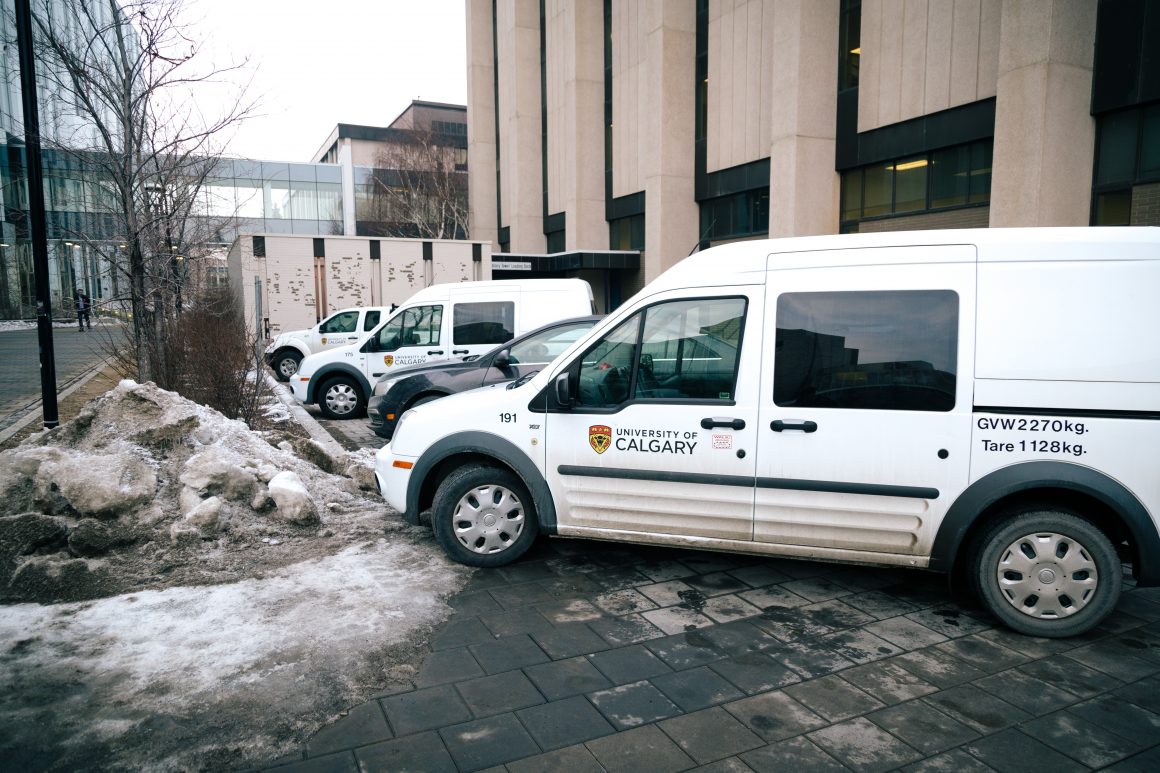
Carbon tax to cost University of Calgary $2.5 million next year
By Scott Strasser, March 24 2017 —
The University of Calgary has revealed new information on how the Alberta carbon tax will impact the university’s budget.
According to the U of C’s Finance and Properties Committee, the new tax will likely cost the university an extra $2.5 million in 2017–18 and $3.5 million in 2018–19. The higher costs are due to increased spending on utilities, heating and gasoline for the U of C’s 174 vehicles.
The Alberta government implemented the carbon tax in January as part of their Climate Leadership Plan. The government aims to put a price on greenhouse gas emissions to incentivize Albertans to make greener choices.
The carbon tax is currently set at $20 per tonne of carbon emissions. It will rise to $30 per tonne in 2018 and $50 per tonne in 2022.
U of C vice-president facilities Bart Becker says the university emits approximately 85,000 tonnes of greenhouse gas emissions a year. He said utilities spending makes up just over two per cent of the U of C’s consolidated budget — which will be $1.3-billion in 2017–18.
Becker said the U of C will continue to pursue sustainability initiatives to offset the effects of the carbon tax.
“We have a long history of investing in projects that aid the university in its goal of reducing our utilities and greenhouse gas emissions,” Becker said in a statement. “We will continue to do so while working closely with government and industry partners to build upon our strong history of utility reduction projects.”
U of C economist Trevor Tombe said he is not surprised by the Finance and Property Committee’s estimates. He noted that the U of C’s heating and cooling plant alone accounted for 65,500 tonnes of carbon emissions in 2014.
“I have looked at those numbers before and the $2.5–3.5 million quoted sounds entirely reasonable,” Tombe said.
Under Alberta’s Climate Leadership Plan, institutions that emit over 100,000 tonnes of greenhouse gases per year are categorized as “high emitters.” These institutions are eligible to receive output based allocations (OBA), which are government subsidies to maintain competitiveness in the province’s energy sector and other carbon-intensive industries.
While the U of C does not classify as a high emitter — and therefore does not qualify automatically for an OBA — the university does fall within the mandatory reporting range of institutions that emit over 50,000 tonnes of greenhouse gas emissions per year.
Tombe believes the U of C should lobby the Alberta government to be classified as a high emitter. He said the university’s level of emissions falls within the range of institutions that can opt in to the OBA treatment.
“If the university hasn’t yet pushed the government to be included in the subsidy system, then this is a missed opportunity,” he said. “The legislation has not yet been put together and there’s precedent for this. I have no idea what the government is planning, but some lobbying by [the] U of C and the [University of Alberta] together might be effective.”
Tombe said many universities in Ontario are provided free allocations under that province’s cap and trade system. The cap and trade system differs from a carbon tax in that it fixes the amount of emissions allowed and then auctions them off.
“I’d stress that a well-designed system is not like Ontario’s, but would instead provide the [U of C] a permanent annual block grant of $2–3 million — this amount would not be tied to our actual emissions,” he said. “If we lower emissions, we keep the difference. Our net costs wouldn’t increase, but we’d retail the incentive to lower greenhouse gases. This, after all, is the whole point.”
